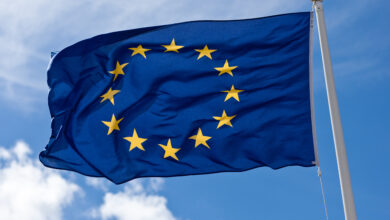Every August in Edinburgh, any indoor or outdoor space large enough to hold a small audience, including churches, conference rooms, university lecture halls and public parks, are converted into theaters in preparation for the largest performing arts festival in the world: the Fringe. Seemingly overnight, teams construct temporary stages and risers, lighting and tech equipment is brought in, tables line the sidewalks next to cafes, and courtyards become beer gardens. Thousands of eccentric performers and spectators descend on the city, transforming it into a month-long party of artistic chaos and creativity.
With over 2500 performances, this year’s international line-up – divided into categories of theater, cabaret, comedy, children’s shows, dance and physical theater, music, musicals and opera – reflects the Fringe’s philosophy of quantity over quality. Shortly after World War II, the Edinburgh International Festival began selectively showcasing performing arts such as operas, orchestras and ballets. Uninvited acts began springing up in Edinburgh at the same time as the official festival. These “fringe” acts eventually became more organized, and collectively now outshine the original. The 2011 festival will run from August 5 to 29.
I had lived in Edinburgh for three years before I had the opportunity to experience festival season. With a few friends visiting from home, together we navigated the ticketing office and managed to book a diverse range of shows. Every year the program changes, but to get a sense of some of the acts, one was a retelling of Little Red Riding Hood set in a British council housing estate by a hip hop interpretive dance group and another was a musical satire about the bias of Fox News in the US and their coverage of the war in Afghanistan. The highlight was an after-dark open-air performance of Macbeth in the imposing Old College courtyard at the University of Edinburgh that used lots of fire.
There are many things in Edinburgh to occupy Fringe-goers between shows. The Old Town’s main thoroughfare, the Royal Mile, has kilt makers, specialty Scotch sellers, shortbread, and Scottish knitwear. Edinburgh Castle still towers over the city from a high rock, having helped defend it during the era of clan warfare and English invasions. The three building that have at one time or another housed the government of Scotland share the same street address, each architecturally significant yet incredibly different from the others. At the bottom of the Royal Mile is the Palace of Holyrood, still the queen’s royal residence, and the new Scottish Parliament. The castle was built for strength, with thick stone walls, a drawbridge, and stations for archers reflecting the anxieties of its builders. Visitors can tour a luxurious selection of 18th to 19th century rooms in the palace when the royals are not there. The edgy new Scottish Parliament building represents the process of devolution from London rule. It looks radically modern juxtaposed with its medieval neighbors.
Cobblestone closes in the Old Town are old enough to have witnessed the Scottish Enlightenment, the influence of which is still apparent on artistic expression. Some buildings are still black from the air pollution of Edinburgh’s industrial era. The Royal Mile statue of Scottish philosopher David Hume, dressed as an ancient Greek, attracts street performers year-round. It is easy to understand why so many writers have been based in Old Town over the centuries, most recently J.K. Rowling.
The restaurant scene in Edinburgh, and much of the UK, has been revolutionized in the past decade, incorporating healthier cooking methods, the locally sourced ethical food movement, and innovations to the traditional pub meals. You can still find meals like fish and chips, steak and ale pies, and “haggis, neeps and tatties” at classic pubs such as The Last Drop (named after its location across from what used to be the gallows) in the Grassmarket, the Mitre on the Royal Mile, and the most atmospheric and supposedly oldest in Scotland, the Sheeps Heid – a bit of a trek out to Duddingston Village nestled on the other side of Arthur’s Seat. The menus of the Outsider on George IV Bridge in Old Town with views of the castle, the Witchery on the Royal Mile, and the Mussel Inn in New Town (“New” Town is more than 300 years old) have appropriated seasonal local products to their own tastes. Knowing where each ingredient comes from is important to these chefs. The Mussel Inn specializes in sustainably harvested mussels grown on ropes in Scottish sea lochs, and the menu at the Witchery will actually includes the name of the farmer who grows their potatoes.
Arthur’s Seat, the mountain that dominates the skyline, is an escape from the crowds and overwhelming energy of the city. From the top views of the city and out to the Firth of Forth can be enjoyed. The park also has a network of roads and paths that lead past lakes and through fields with wildflowers and thistles. From many of these, buildings cannot be seen and I feel as if I've been transported to the Highlands for a few hours.




